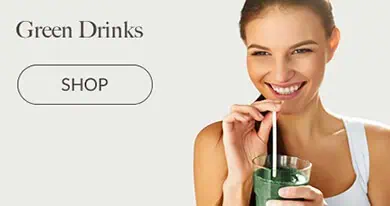Hi, I’m Dr. Chad Larson. And this is Keep It Real. Keep It Real is all about real talk based on my 20 plus years of clinical experience. What we’re really talking about is real food, real medicine, and real change.
Real or Not Real?
I’m asked all the time by patients and friends, “Hey, I heard from a friend or I read on the Internet about detoxification. What is that? And should I do it?” Those are questions I get almost every day. And here’s the thing: detoxification is real. Our body actually detoxes things and, as the name suggests, it helps to decrease toxins that build up in the body. We’re exposed to toxins constantly from our foods, from the things that we breathe in, from things that we consume by drinking. Toxins build up and we’ve got amazing systems that help to detoxify and eliminate them, to process and metabolize these things out of our system. And there’s kind of an old school term that I try to use every now and again to kind of keep it alive. Or, my naturopathic elders would be proud that I’m using this word. It’s “emunctories.” Emunctories are basically our organs of elimination. Think of your kidneys and your gastrointestinal tract, and even your skin. These are the emunctories.
Back in the old school days, we used to talk about opening up the emunctories to help those organ systems work better. So when we’re thinking about detoxification, I want to keep the emunctories in mind. I want to think about how I can help somebody improve their ability to remove these toxins from their systems and how we can support and nourish those organ systems
Start with Elimination
There’s kind of two sides to this coin. The first is that we want to try to eliminate further toxicity in the system. That’s where we want to start. If we think of this in two phases, two sides of the coin, number one is to stop being exposed to things that are toxic. And the low hanging fruit in this regard would be things like processed foods, sugar, and processed inflammatory oils. I’ve talked about all these things in past episodes. Really what they do is they just bog down the system. The liver and the gastrointestinal tract don’t really recognize these things as actual foods. So it kind of slows the system down; it can produce inflammation and imbalance in the system.
Ultra-Processed Food is too Abundant
And just to remind you, we did an episode on the fact that most diets in the US are 60% ultra-processed food. For most people 60% of their calories are coming from ultra-processed food. Ultra-processed food is like ready to eat and ready to heat frozen burritos and frozen pizzas, fast food, all the foods that have sugar and processed grains, muffins and cakes, sugar sweetened sodas and all these kinds of things. It’s the most common component of our diet. Sixty percent! And it’s not just people who live in food deserts and have to get their foods from a convenience store. These are choices that people are making, it’s across all socioeconomic strata. That means it’s a choice.
People are deciding and choosing to have ultra-processed food. It’s a big problem in the US. And as we know from other studies, only 12% of adults in the US are metabolically healthy, in other words, have healthy metabolic systems. But detoxification is real and it is something that probably more of us need to do more often.
-Dr Chad Larson
Phase One – Decrease Inflammation by Omitting Processed Foods
So phase one is to stop putting stuff into the system that is inflammatory and causes your detox mechanisms to bog down. Rid your diet of the sugars, the processed foods, and the processed oils. What I mean specifically by processed oils are your corn oil, cottonseed oil, soybean oil. For food manufacturers to make these kinds of oils, it takes massive technology and it produces a really, really inflammatory substance for us to consume. So just take that stuff out of your diet. Especially during the COVID era, a lot of people over consumed alcohol. You want to dramatically reduce or maybe for a period of time eliminate alcohol from your habits. Because that’s just something else that your emunctory organs have to deal with. So that’s phase one.
Phase Two – Give Your Body a Break, Try Fasting to Induce Autophagy
Phase two is to support the body with components and cofactors and building blocks to help support and nourish those organ systems. Number one in that regard is fasting. Not eating is a great way to kind of give everything a break for a little bit, because the body’s dealing with stuff constantly. Research has found that the feeding window, the eating window for most people, is about 15 hours a day. So pretty much other than when they’re horizontal in bed, they’re eating. That’s a lot of work for the body to do every day, all day long. And there’s a whole bunch of ways to do a fast. You can just do a 12 hour overnight fasted period, leaving a 12 hour eating window. Or sometimes we’ll get a person to go up to a 14 hour overnight fast and a 10 hour eating window. During that period of time where they’re not consuming any calories, all these detox mechanisms roll into the system and they help produce something called autophagy. Autophagy means self-cleaning. The self-cleaning mechanisms come in and start to get rid of old proteins and old cells, and lots of regeneration and rejuvenation happen during autophagy. We can really take advantage of that.
Eat Sulfur Rich Vegetables
Also, what do we put in during the second phase? How do we support? Sulfur based vegetables. These are vegetables like the onion family, the leek family, the garlic family. They have all these great, sulfur-rich nutrients in them; excellent for detoxification of the system. Mushrooms also have these sulfur-rich nutrients. And then probably the brassica family: the cruciferous vegetables, your broccoli, cauliflower, kale, cabbage, that kind of stuff. They have a unique nutrient in them called sulforaphane and it’s a fantastic detoxifier for the system.
NAC Boosts Glutathione Helping Detoxification
Another thing that we want to do is to support one of our detox superheroes called glutathione. Glutathione is like our internal cellular superhero for detoxification and reducing excess oxidation and inflammation. There’s some things that we can do with our diet. We could increase glycine in our system. We’ve had episodes on collagen and how collagen provides you with a nice dose of glycine. You can take glycine along with another nutrient called cysteine. Some people have taken a popular supplement called N acetyl cysteine or NAC. Cysteine is a great building block for glutathione. So these are some things we can do either in our diet or as supplements to help boost up our glutathione production which is fantastic for detoxification.
Positive Activities to Produce a Hormetic Effect
Also, we must introduce a term you may or may not have heard of before. It’s called hormesis or a hormetic effect. A hormetic effect is when we introduce a slight stressor to our system in order to generate a healing response. An example of this could be sitting in a hot sauna, or sitting in a hot tub. It’s hot so it’s kind of uncomfortable. It’s a little bit of a stressor to our system, but it has a net positive effect. This is hormesis. And particularly with heat, we produce this substance in our system called heat shock protein. These heat shock proteins are great detoxifiers so if we get them to release into our system, it can really help to expedite detoxification and rejuvenation of our system. Even exercise has a kind of hormetic effect. When we’re exercising we’re kind of breaking down tissue so it builds back up. Cold therapy. There’s some great research on cold therapy. It doesn’t produce heat shock protein, but it creates other very beneficial physiological effects which can be detoxifying.
Support Glutathione
So, in summary, in addition to the diet and lifestyle kinds of things where you’re fasting, you’re consuming vegetables that are sulfur rich, you’re doing some kind of heat/cold situation, you also want to feature certain supplements to support your detox systems. The best is supporting glutathione. Glutathione is just my favorite nutrient for supporting detoxification. You can take glutathione straight as a supplement, and there are also things you can take that help boost your body’s production of glutathione, such as N acetyl cysteine. Cysteine is an amino acid, the rate limiting amino acid in glutathione production. There’s another amino acid called glycine which is also really important for glutathione production and also has its own extra beneficial detoxification process. Glycine itself not only is a building block for glutathione, but also helps to metabolize methionine, which we don’t want too high. You need to detoxify that, and where can we get glycine? Either in a supplement that contains glycine, or of course we can get it from collagen. A third of a serving of collagen gives you glycine. So glycine, N acetyl cysteine, and glutathione are fantastic nutrients, supplements to help support your overall detox situation.
*The midlife health minute in this episode of Keep It Real with Dr. Chad Larson is possible with the help of Pure Prescriptions.
Recommended Products:







